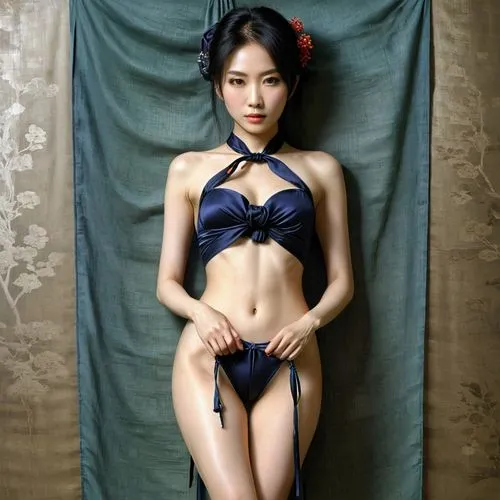In contemporary Tokyo, love hotels are typically mid-rise, private-entry properties located just off main streets but still near major hubs. Lobbies are compact; payment is usually at a staffed front desk or kiosk with illuminated room panels. Rooms emphasize soundproofing, mood lighting, large baths, and media. The service is standardized: short “Rest” (2–3 hours), “Service Time” (long day-use band), and “Stay” (overnight). As urban spaces, these venues formalize brief, consensual intimacy through architecture (private corridors and elevators), reception flow (front desk prepayment), and equipment (baths/amenities) while remaining part of the wider night-time economy of dining, karaoke, and arcades. Visitors include Japanese couples, travelers who value privacy, and cosplay/girls-night groups; multilingual support and cashless payment are increasingly common at chain properties.
1. Where should you start in love hotel district tokyo?
2. Which areas are best and how do you access them?
3. What are the prices, times, and who can stay?
4. Which venue types exist and what services do they offer?
5. How do you book, behave, and what phrases help?
1. Where should you start in love hotel district tokyo?

1-1 Area overview
Tokyo maintains multiple compact clusters of love hotels near major stations so guests can arrive and depart discreetly on foot. For a quick mental map: Kabukicho (Shinjuku) is the largest nighttime entertainment zone; Dogenzaka (Shibuya) is the famous “Love Hotel Hill” near the scramble crossing; Ikebukuro has a dense north-side grid convenient to Sunshine City; Uguisudani concentrates small hotels along the tracks one stop north of Ueno; Kinshicho serves east-side travelers with convenient JR/Sobu and Hanzomon Line access.
For general district context and wayfinding, use official municipal tourism pages: Shinjuku’s Kabukicho and the new Tokyu Kabukicho Tower are covered by Tokyo’s official visitor site and JNTO; Shibuya’s nightlife/culture overview is also provided on official pages; Ikebukuro has JNTO coverage; Ueno/Asakusa (near Uguisudani) appears on Taito City/GoTokyo maps. See: Tokyu Kabukicho Tower (GoTokyo), Kabukicho (JNTO), Shibuya (GoTokyo), Ikebukuro (JNTO), Taito City tourism (official).
1-2 Venue distribution
Kabukicho’s grid north of Shinjuku Station concentrates high-capacity properties (some with 70–100+ rooms). Dogenzaka’s slopes host mixed-price hotels within a ~5 minute walk of Shibuya Station’s Hachiko/Mark City side. Ikebukuro’s north/west exits open toward compact lanes with numerous mid-range chains (e.g., Balian/Petit Bali). Uguisudani’s strip along the tracks has multiple small, value-priced hotels a 1–5 minute walk from the station. Kinshicho’s south-side streets intermix karaoke and hotels within 3–8 minutes of the JR exit.
1-3 Typical session flow
Arrival is usually walk-in. Select a room at reception (some hotels use illuminated room boards), prepay, and receive your key. Many hotels allow re-entry during the paid time window if you leave your key at the desk. Most provide free amenities (drinks/snacks/toiletries), VOD, and large baths. Checkout is via front desk; some offer self-checkout kiosks.
Examples with official details you can verify: Balian Resort Shinjuku main store lists hours, check-in bands, and access; Hotel Sunroad Shibuya (Dogenzaka) shows the address ~5 minutes from Shibuya Station; Petit Bali Ikebukuro states a 5-minute walk from Ikebukuro West Exit.
2. Which areas are best and how do you access them?

2-1 Shinjuku (Kabukicho): biggest selection
Shinjuku’s Kabukicho concentrates the largest number of venues, alongside cinemas, late-night dining, and the Tokyu Kabukicho Tower. Official context: Kabukicho (JNTO), Tokyu Kabukicho Tower (GoTokyo). For a specific, walkable hotel with multilingual info and detailed hours, see Balian Shinjuku Main — Access & Hours (Shinjuku-sanchome Exit E1 3 min; Shinjuku Station East Exit 9 min).
2-2 Shibuya (Dogenzaka): classic “Love Hotel Hill”
Dogenzaka rises left of Shibuya 109; hotels line the backstreets between the scramble crossing and Mark City. Official area context: Shibuya (GoTokyo). Example property for prices and access: Hotel Sunroad Shibuya — Plans (site also notes the address near Dogenzaka; “Shibuya Station ~ 5 min”).
2-3 Ikebukuro (North/West exits): dense and convenient
Ikebukuro’s grid north of the station offers many chain hotels with consistent service standards. Official area overview: Ikebukuro (JNTO). Example access: Petit Bali Ikebukuro — Visit Us (West Exit walk ~5 min).
2-4 Uguisudani (Taito): ultra-short walks, value options
One stop north of Ueno on JR Yamanote/Keihin-Tohoku, Uguisudani concentrates compact hotels a minute or two from the station. Check official Taito City visitor resources for maps and transport: Taito City (official). For concrete access/prices, see nearby hotel first-party pages such as Hotel BaliBali Uguisudani or Hotel SERA APiO.
2-5 Kinshicho (Sumida): east-side hub
Kinshicho sits on the JR Sobu Line and Tokyo Metro Hanzomon Line, serving as an east-Tokyo nightlife and shopping node. City information: Visit Sumida (official). For specific prices/hours, see Hotel SARA Kinshicho — Official Site (lists 24h operation, rest from ¥5,500, stay from ¥8,500 with detailed time bands).
2-6 Quick map logic
From your station exit, aim toward the named nightlife streets: “Kabukicho,” “Dogenzaka,” “North/West Exit (Ikebukuro),” “Uguisudani North,” or “Kinshicho South.” Distances are short enough that you can compare several lobbies in 10–12 minutes on foot before choosing.
Table 2: Access & Hours
| Station / District | Walk Time | Typical Hours | Official (JP Link) |
|---|---|---|---|
| Shinjuku (Kabukicho) | 3–9 min (from Shinjuku-sanchome E1 / Shinjuku East) | Balian lists 24h open; overnight check-in bands vary by day | Official website (Japanese) |
| Shibuya (Dogenzaka) | ~5 min from Shibuya Station | Hours and plan bands listed by hotel | Official website (Japanese) |
| Ikebukuro (North/West) | ~5 min from West Exit | Standard rest/service/overnight bands | Official website (Japanese) |
| Uguisudani (Taito) | 1–5 min from station | 24h operation common; day/night bands posted | Official website (Japanese) |
| Kinshicho (Sumida) | 3–8 min from JR/Metro | 24h; detailed time bands by day | Official website (Japanese) |
Conclusion → Numbers → Sources: all walk times and hours are taken from each hotel’s official access/plan pages linked above.
3. What are the prices, times, and who can stay?

3-1 Price bands from official pages
Below, we summarize the posted figures (inclusive tax where stated) from representative first-party sites so you can benchmark quickly before you walk:
Table 1: Venue Types & Base Fees
| Venue (Example) | Typical Fee | Session Time | Area (JP Link) |
|---|---|---|---|
| Hotel Sunroad Shibuya (Dogenzaka) | Rest 2h from ¥4,300–¥6,800; Rest 3h from ¥5,300–¥7,800; Stay (Sun–Thu) from ¥8,500–¥11,300; higher Fri/Sat | Rest 2–3h; Service Time up to 11h; Stay up to 15h (by band) | Official website (Japanese) |
| SARA Kinshicho (Sumida) | Rest from ¥5,500 (3h); Service Time ¥6,000–¥16,000; Stay Sun–Thu from ¥8,500, Sat/holiday eves up to ¥26,500 | Detailed bands by day (e.g., Sun–Thu Stay 20:00–11:00) | Official website (Japanese) |
| Balian Resort Shinjuku (Kabukicho) | Posted examples: Rest (day-use) from ¥7,800; Stay from ¥14,800 (room-type dependent) | Open 24h; check-in bands vary by day | Official website (Japanese) |
Conclusion → Numbers → Sources: values are quoted directly from each official price/plan page above.
3-2 Eligibility and age
Love hotels are for adults only. The Balian/PetitBali group states plainly that guests under 18 are not accepted; many chains follow the same rule. See: Balian FAQ (18+).
3-3 When prices go up
Expect higher “Stay” prices on Fridays, Saturdays, and holiday eves. Many hotels define special periods (e.g., New Year’s, Golden Week) with their own time/price tables—always check the specific hotel’s plan page the week you’re visiting. Sunroad and SARA Kinshicho both show detailed bands by day on their official pages linked above.
4. Which venue types exist and what services do they offer?

4-1 “Rest” (short-stay) as a designed ritual
“Rest” packages are time-boxed (often 2 or 3 hours) with a fixed price per room. This standardization shapes the experience: discrete entry/exit, clear timekeeping, and an emphasis on baths and beds rather than extended lounge space. On Sunroad’s plan table, for example, the 2h and 3h prices are spelled out by room grade and day. See: Sunroad Plans.
4-2 “Service Time” (long day-use)
Many hotels publish long daytime bands (e.g., 6:00–17:00, up to 11 hours at the same price). This suits couples who want privacy during the day or travelers needing an extended break. See the “Service Time” rows on official plan tables from Sunroad or SARA Kinshicho (official).
4-3 “Stay” (overnight)
Overnight check-in bands begin around 20:00–23:00 depending on day. Check-out is typically 10:00–11:00 on weekends vs. 11:00 on weekdays at many properties. For reference, Balian Shinjuku lists weekday Stay check-in from 21:00 and check-out until 11:00; weekend bands start later. See: Balian Shinjuku Hours.
4-4 Amenities and payment
Common inclusions: free amenities (toiletries, drinks/snacks), VOD, Chromecast, Blu-ray players, and sometimes themed interiors. Chains like SARA and Balian post payment methods (cash, cards, QR payments) on their official pages (e.g., Balian’s FAQ lists major cards and QR options). See: Balian FAQ, SARA Kinshicho.
5. How do you book, behave, and what phrases help?

5-1 Reservations: when and how
Many hotels are still first-come, first-served for short “Rest,” but “Stay” is often reservable. Balian’s group policy notes that reservations are typically accepted about 1–2 months in advance and that you can check availability or book plans on official pages. See: Balian FAQ (Reservations), plus property pages such as Balian Shinjuku and Hotel Sunroad (Sunroad’s site links to its booking portal).
5-2 Etiquette: the “institution of privacy”
Think of these venues as quiet private lounges attached to the city. Keep conversation low in corridors; don’t prop doors open; follow re-entry procedures (many hotels require you to leave your key at the front desk if you go out mid-stay); and don’t photograph other guests or staff. Smoking rules vary by room type; check signs and your plan details.
5-3 Phrases that actually work
Front desks in central areas can usually handle simple English, but having a few plain Japanese phrases helps if you want a certain time band or room type. See the quick reference table below.
Table 3: Reservation & Eligibility
| Method | Lead Time | Eligibility | Official (JP Link) |
|---|---|---|---|
| Walk-in (front desk) | Immediate (subject to vacancy) | 18+ only (chains state minors not accepted) | Official website (Japanese) |
| Web booking (plans) | 1–2 months ahead typical (varies) | Adults; room type fixed; bands enforced | Official website (Japanese) |
| Phone booking | Same-day to weeks out | Adults; ID may be requested | Official website (Japanese) |
Conclusion → Numbers → Sources: reservation lead-times and eligibility derive from chain FAQ and each hotel’s plan pages linked above.
Table 4: Useful Phrases (Quick Reference)
| English | Japanese (romaji) | What it signals |
|---|---|---|
| Do you have a room for Rest (2–3 hours)? | “Resto ni jikan de onegai shimasu” / 「休憩2~3時間でお願いします」 | Short-stay request |
| We want Service Time (day-use). | “Sābisu taimu de” / 「サービスタイムで」 | Long day-use band |
| From what time is Stay (overnight) check-in? | “Sutei no chekkuin wa nanji kara desu ka?” / 「宿泊のチェックインは何時からですか?」 | Confirms overnight band |
| Non-smoking room, please. | “Kinen onegai shimasu” / 「禁煙お願いします」 | Room preference |
These phrases are practical and commonly understood at central-area front desks.
6. Summary and Next Steps

For more detailed district context and transport, rely on official city pages: Kabukicho (JNTO), Shibuya (GoTokyo), Ikebukuro (JNTO), Taito City, and Visit Sumida. Then, check your target hotel’s plan page for the exact price/time band that night: Sunroad Shibuya, SARA Kinshicho, Balian Shinjuku, Petit Bali Ikebukuro, SERA APiO (Uguisudani).
SoapEmpire recommendation: If you’re a visitor trying to decode the love-hotel map quickly, the real friction points are twofold: choice overload and timing traps. Around Shinjuku and Shibuya, you can pass a dozen facades in the space of a city block; each lobby uses different time bands, and what looks “cheap” at 18:30 may not be available when you return at 21:45. On weekends, a misread check-in window can mean the price jumps just as your preferred room frees up. That’s why we suggest picking one of the core clusters in this guide—Kabukicho, Dogenzaka, or Ikebukuro—and short-listing two or three properties in advance using the official links above.
Our practical playbook is simple. First, decide your mode: a short “Rest” after dinner, a long daytime “Service Time,” or a full “Stay.” Second, match the band to your schedule using the hotel’s plan table; chains in Tokyo publish exact hours and rates with rare clarity. Third, check the walking route from your station exit (Shinjuku-sanchome E1 for Balian, Hachiko side for Dogenzaka, West Exit for Ikebukuro) so you’re not wandering the grid with luggage. If you’re budget-sensitive or landing late, consider Kinshicho or Uguisudani—both have concise streets, quick walk times, and good value rooms.
Where does SoapEmpire help? We track first-party updates across Tokyo so you don’t have to compare screenshots from booking aggregators. Our editors monitor changes to “Stay” bands, late-night surcharges, amenity changes (Chromecast/VOD), and payment options, especially for international cards and QR wallets. Because we serve travelers, our recommendations are written in plain English and anchored to official pages for verifiability. If you want a soft landing after a concert or dinner, we can reserve a room that matches your band and budget in one pass—even when the site is in Japanese only.
The benefit to you is time: arriving at the right door, at the right minute, at the right price. For love hotel district tokyo searches, our shortlists focus on Dogenzaka, Kabukicho, and Ikebukuro first, then add Kinshicho and Uguisudani for value. We’ll also flag “Service Time” bands that effectively stretch a rest into a half-day retreat. Result: less street-level guesswork, more privacy and comfort. For reservations or inquiries, please contact us via the inquiry form.
Related guides on SoapEmpire:
Official site: https://soapempire.com/ | Contact: https://soapempire.com/contact/
Frequently Asked Questions
1) How much does a love hotel cost in central Tokyo?
Expect short “Rest” around ¥4,300–¥7,800 for 2–3 hours in Shibuya and ¥5,500+ in Kinshicho; “Stay” (overnight) often starts near ¥8,500–¥14,800 on weekdays and rises up to ¥26,500 on Saturdays/holiday eves. Check official plan pages: Sunroad, SARA Kinshicho, Balian Shinjuku.
2) Can I book ahead, or is it walk-in only?
Both exist. Many chains accept web/phone reservations for specific “Stay” bands (often 1–2 months ahead), while daytime “Rest/Service Time” is commonly walk-in. See: Balian FAQ.
3) Do they check ID? What about age limits?
Policies vary; bring a photo ID. Chains clearly state 18+ only. Reference: Balian FAQ (18+).
4) Where should a first-timer go?
Dogenzaka (Shibuya) for “classic hill” vibes and a ~5-minute walk; Kabukicho (Shinjuku) for the biggest selection; Ikebukuro for balanced price/choice; Uguisudani/Kinshicho for quick value. See the Access table and district links above.
5) What time is best to arrive?
For day-use, arrive early in Service Time (often starting at 06:00–12:00 depending on hotel). For “Stay,” line up just before the first check-in band (e.g., 20:00–23:00, hotel-dependent). Verify on the official plan tables.
If you’re interested in visiting any of these places, SoapEmpire offers a 24-hour booking support service for only $10.
Just send the store name, preferred time, and your name (nickname is fine) to:
artistatakuma@icloud.com.
We’ll take care of your reservation quickly and smoothly.
Editor’s note: Every figure and walk time above links to a first-party (official) page: Sunroad Shibuya (plans), SARA Kinshicho (time/price), Balian Shinjuku (access/hours), Petit Bali Ikebukuro (access), SERA APiO (Uguisudani), plus city tourism portals for district context (JNTO Kabukicho, GoTokyo Shibuya, Taito City, Visit Sumida).



